Jouhou System Kougaku (JSK)
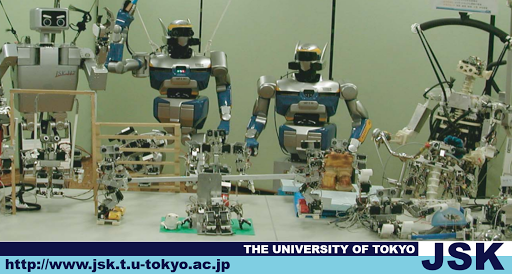
The University of Tokyo has several labs that have contributed greatly to the field of humanoid robotics. This article will go over just the research from the Jouhou System Kougaku (JSK) Laboratory within the department of Mechano Informatics.
HARP
Humanoid Autonomous Robot Platform (HARP) started in 1991. H3 is a stationary upper torso and H4 is a humanoid upper body mounted on an electric wheelchair.
H5
H5 is a humanoid robot that dynamically walks using Zero Moment Point. The robot has a total of 30 DoF: 6 DoF for each arm and leg, 1 DoF for each gripper, and an additional 4 DoF for the head. H5 is 1270 mm tall and has a weight of 33 kg.
More details can be found in the research paper “ダイナミックヒューマノイドH5の開発”.
H6
H6 was assembled in 2000 by the Aircraft and Mechanical Systems Division of Kawada Industries. The robot has the same 6 DoF in each leg as H5, but adds a toe joint. There is also now 7 DoF in each arm, 1 DoF for each gripper, 2 DoF for the neck, and 3 DoF for the eyes. This brings the total to 35. H5 is 1370 mm tall and weighs 55 kg including batteries. The robot features dual Pentium III processors allowing the robot to operate with no tether (power or control).
H7
Also built by Kawada Industries, H7 features stronger actuators in a similar arrangement as H6. The robot is 1468 mm tall and weighs 57 kg. Custom 6-axis force sensors were designed and mounted in each foot. Four lead acid batteries power the robot.
In 2004, H7’s arms were remodeled, giving the robot 3 DoF grippers.
Isamu
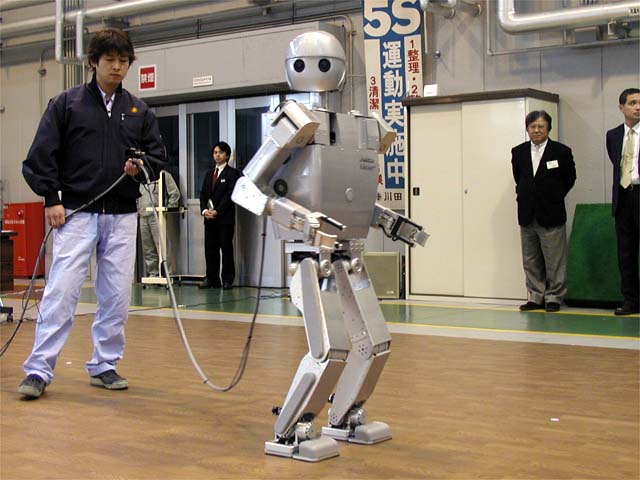
Isamu (Integrated System of Advanced Motion-control Units) is a humanoid created by Kawada Industries in 2001. The robot is heavily based off of H6 and H7; JSK lab also developed the control software. Isamu is 1468 mm tall with a weight of 55 kg. The maximum walking speed is 2 km/h. The robot can hold 2 kg in it’s gripper. The built in lead acid batteries only allow for 7 minutes of operation.
This robot was only shown off in an operational state once or twice.
Info sourced from here: https://pc.watch.impress.co.jp/docs/article/20011108/isamu.htm
HRP-2
Built by Kawada Industries with experience gained from H6 and H7. JSK uses it’s two HRP-2’s in four research areas: environment recognition by 3D vision, whole-body motion planning, whole-body learning through leading, and daily household assistance. Also competed in the DARPA Robotics Challenge under team HRP2-TOKYO.
More info here: HRP-2
Musculoskeletal Robots
TH1
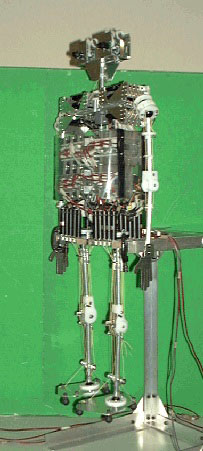
Tendon-driven humanoid developed in 1999. Establishment & verification of the method to drive a spherical joint structure with many muscles
Kenta
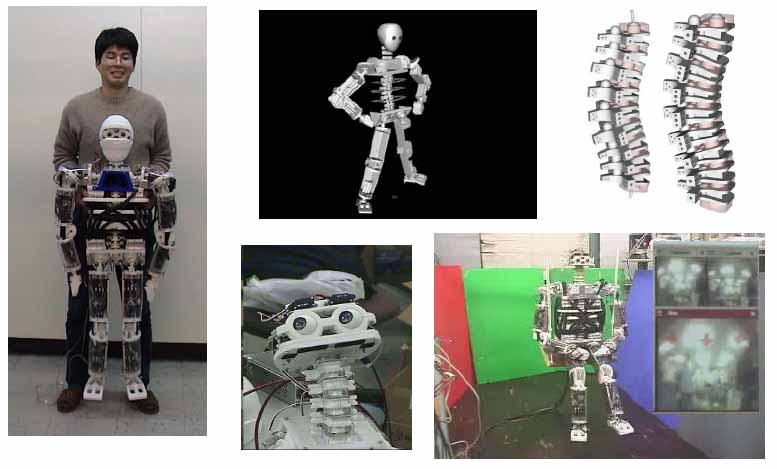
Whole-body tendon driven humanoid with flexible spine. Height of 1230 mm and weight of 19 kg. There are 132 motors and over 400 sensors. More info in The Design and Control of the Flexible Spine of a Fully Tendon-Driven Humanoid “Kenta”
Kotaro
Shown at the Prototype Robot Exhibition at the Aichi EXPO in 2005, Kotaro features 91 DoF. Each motor is 4.5 watts. The ball joints used a cell phone camera sensor to measure position. Even the eyes are tendon driven. Skeleton structure printed using stereolithography. More information in A Musculoskeletal Flexible-Spine Humanoid Kotaro Aiming at the Future in 15 years’ time.
Kojiro
Increased actuator strength compared to Kotaro by replacing 4.5 watt DC motors with 40 watt Maxon EC16 motors. Not clear if the robot was ever able to balance on its own.
Kenzoh
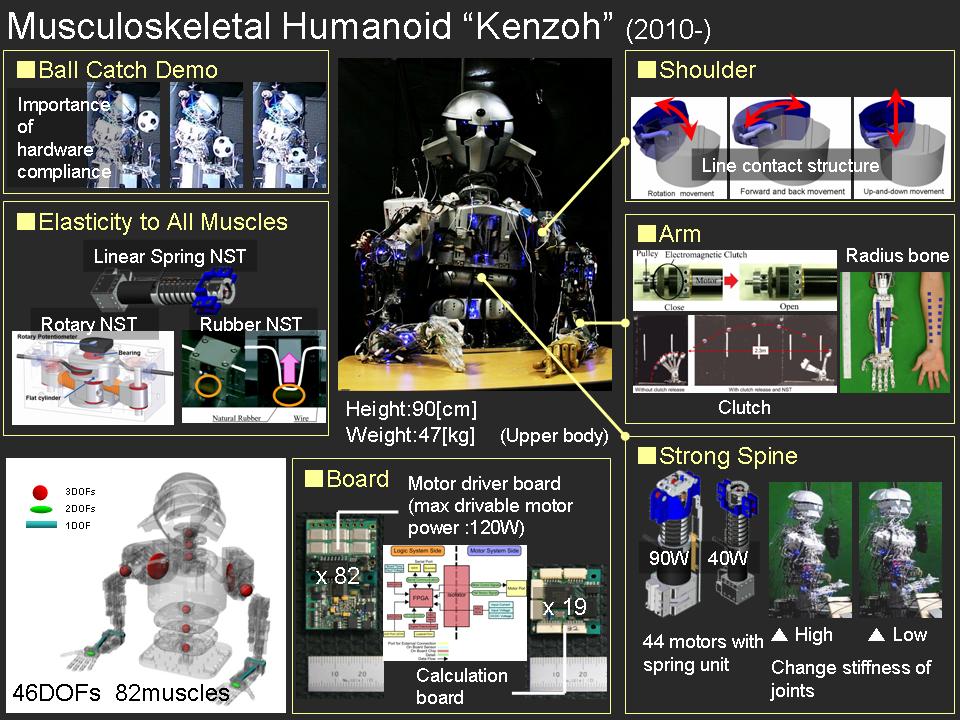
Only the upper body. Non-linear elastic elements in tendons to achieve variable stiffness joints.
Kenshiro
Screw-Home Mechanism(SHM) provides a yaw rotational DOF and a locking mechanism by mimicking functions of the human knee. Able to balance upright and walk slowly.
Kengoro
Can do push-ups, crunches and sit-ups. Cools it’s 108 motors by sweating. Frame is sintered metal to allow water to seep through. “Can run for half a day on about a cup of deionized water.” Kengoro is 1700 mm tall and weighs 56 kg.
HRP-3L
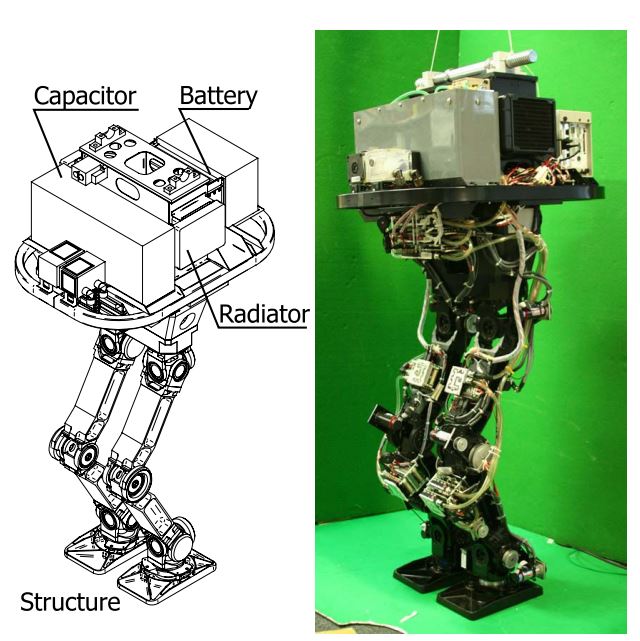
Junichi Urata and other members of the Jouhou System Kougaku Laboratory at the University of Tokyo took the lower half of an HRP-3 (referred to as HRP-3L) and increased the strength of the robot dramatically. Electronics, knee joints, gears, some structures, and all the motors were replaced. The HRP-3 150W Maxon motors were swapped for 200W Maxon motors with custom water cooling. The maximum current is 125 Amps, which is about seventeen times greater than current rating of the motor (using air cooling). A two layer capacitor was added to supply (and absorb) large current spikes that the battery wouldn’t be able to handle alone. The knee joint is capable of speeds up to 1000 degrees per second and applying up to 350 Nm of torque.
Note: As detailed in Design and Development of a Tendon-driven and Axial-driven Hybrid Humanoid Leg with High-Power Motor Driving System, HRP-3L originally had a tendon driven ankle for impact absorption
S-Taro
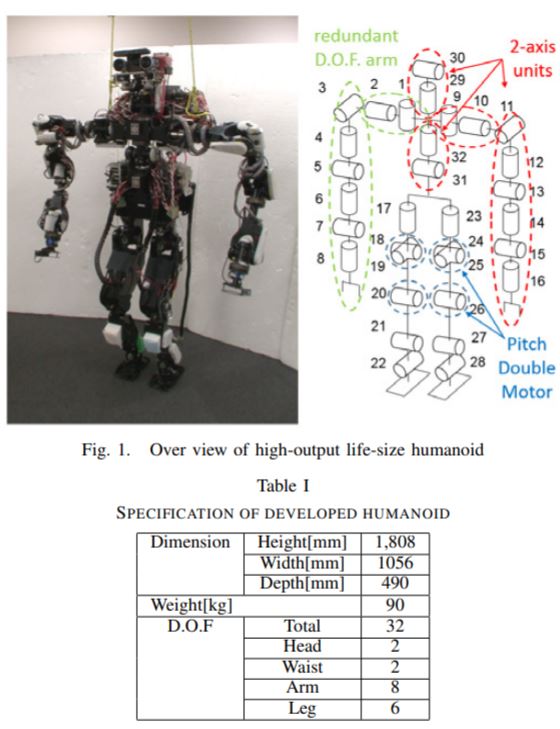
In Development and Verification of Life-Size Humanoid with High-Output Actuation System, the S-Taro humanoid is described in detail. The arm is made up of four 2-axis modules. The modules use air cooled 30mm MAXON EC-4pole motors attached to harmonic drives for gear reduction. These same modules are used for the head and waist. The knee and hip joints are made up of two water cooled motors each. For cooling the motors and motor controllers, there is a total of 2 liters of coolant water flowing through S-Taro. The robot is powered by an external 13 farad capacitor.
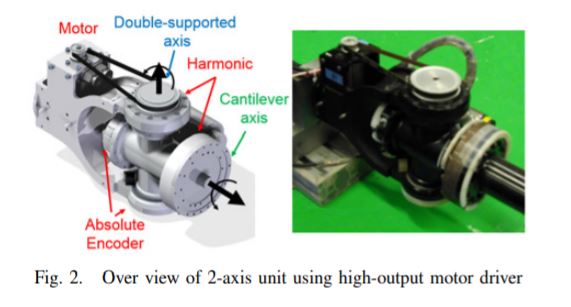
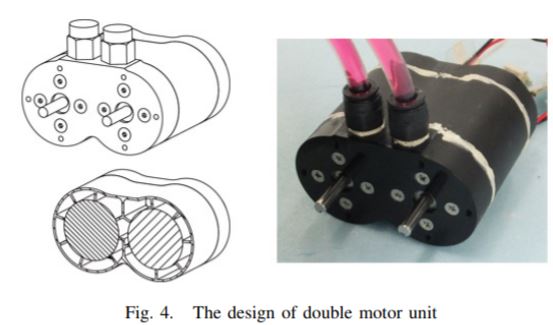
S-Taro is extremely strong. One of its arms on it’s own weighs 9.2 kg and can lift 35 kg (in this experiment the max torque achieved was 158 Nm). The leg is limited to 100 kg due to the torque limit of the harmonic drives and belts. The researchers demonstrated the robot’s lower torso stepping with an additional 100 kg added to the torso.
Dave Coleman posted a blog post in 2014 showing S-Taro. This robot was still in the JSK laboratory so it most likely predates the foundation of Schaft.
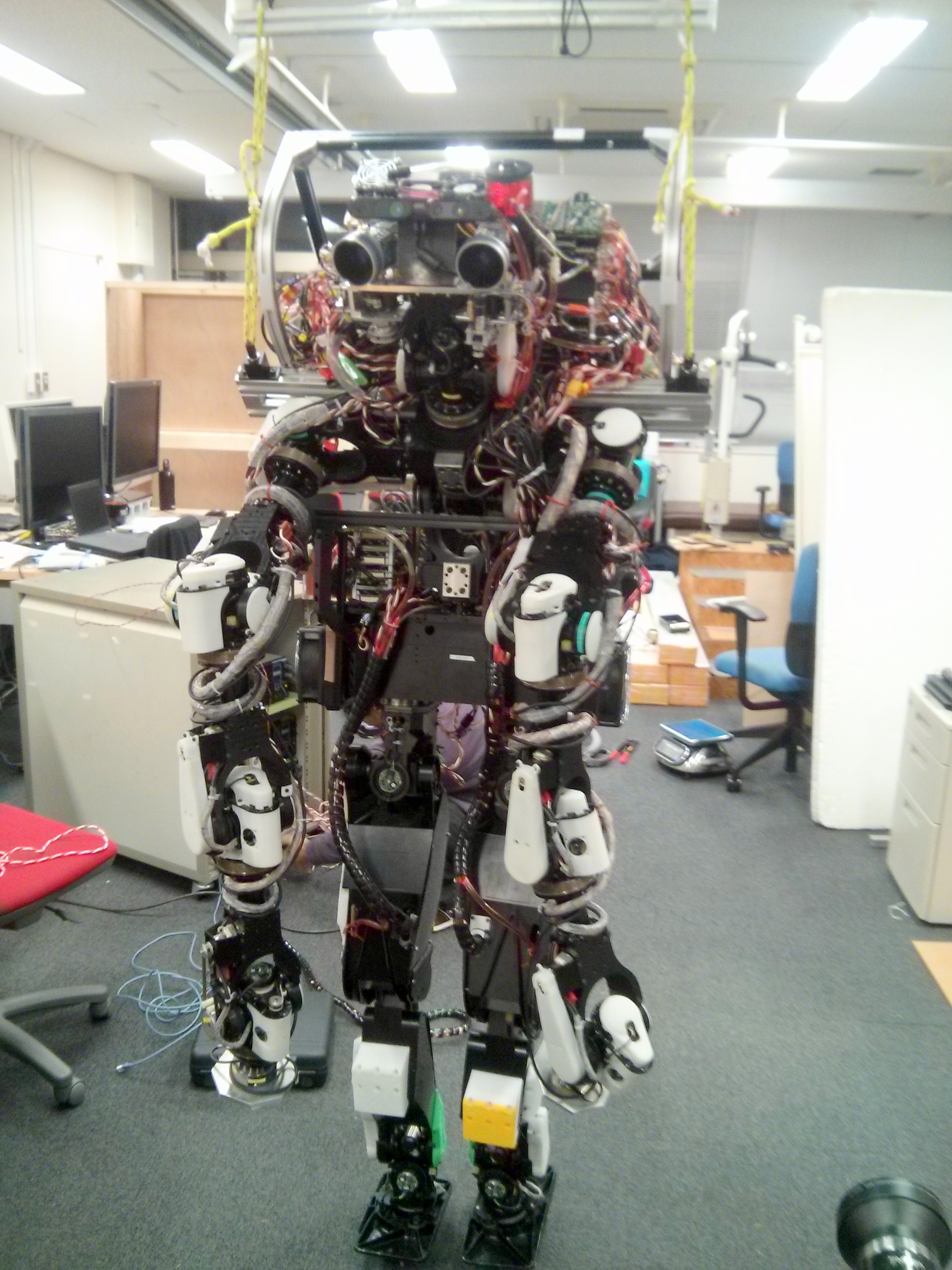
Junichi Urata and Nakanishi wanted to form a team for the Darpa Robotics Challenge, but as University of Tokyo researchers they could not receive funding from a military agency. They left the University of Tokyo and founded SCHAFT, with Nakanishi as CEO and Urata as CTO. More info here: SCHAFT
CHIDORI and L1
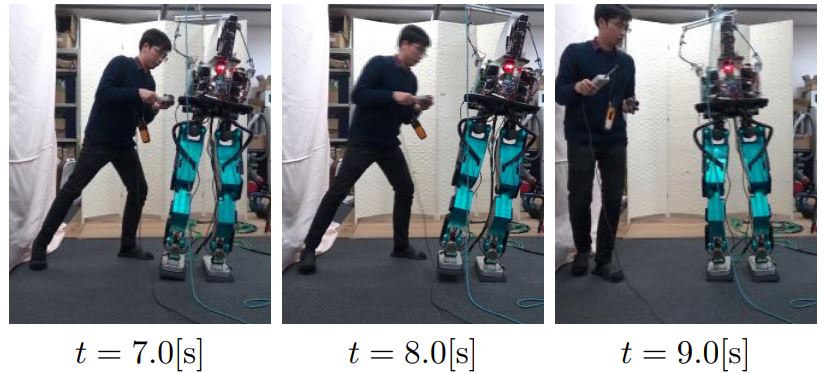
CHIDORI is about 1.3m tall, weighs approximately 50kg, and has 12 degrees of freedom. The robot is based on the lower half of S-Taro and is position-controlled. CHIDORI has 6-axis force/torque sensors which are used for collision detection on each foot. More information on the software can be found in Bipedal Walking Control against Swing Foot Collision Using Swing Foot Trajectory Regeneration and Impact Mitigation. CHIDORI’s walking algorithm got updated in Robust and Stretched-Knee Biped Walking Using Joint-Space Motion Control to enable step recovery, straight legged walking, and torque control of the ankle. In Autonomous Safe Locomotion System for Bipedal Robot Applying Vision and Sole Reaction Force to Footstep Planning, CHIDORI gained vision sensors.
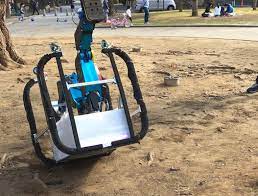
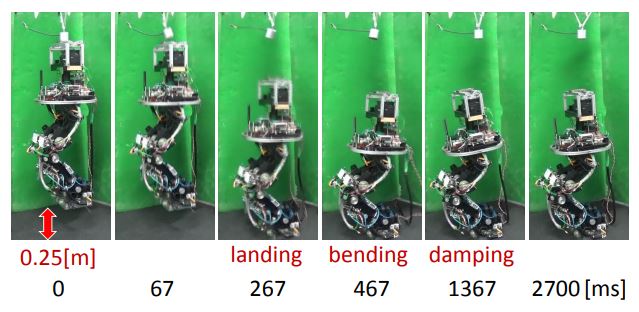
In Design and Evaluation of Torque Based Bipedal Walking Control System That Prevent Fall Over by Impulsive Disturbance, L1 is described as a 12 degree of freedom robot weighing 56kg. This robot differed from CHIDORI in that it is completely torque controlled. L1 doesn’t have torque sensors, but uses encoder and motor current data to estimate the torque. There are more details about the torque estimation method in Distributed Torque Estimation toward Low-Latency Variable Stiffness Control for Gear-Driven Torque Sensorless Humanoid. HRP-3L was able to jump, however, it could not take the sudden impact of the landing. Because of the torque control and compliance, L1 was able to absorb the impact of a 25 cm drop.
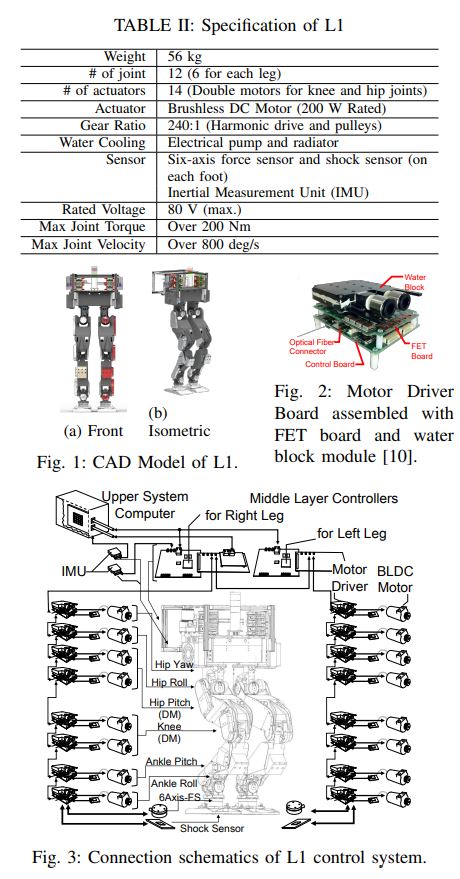
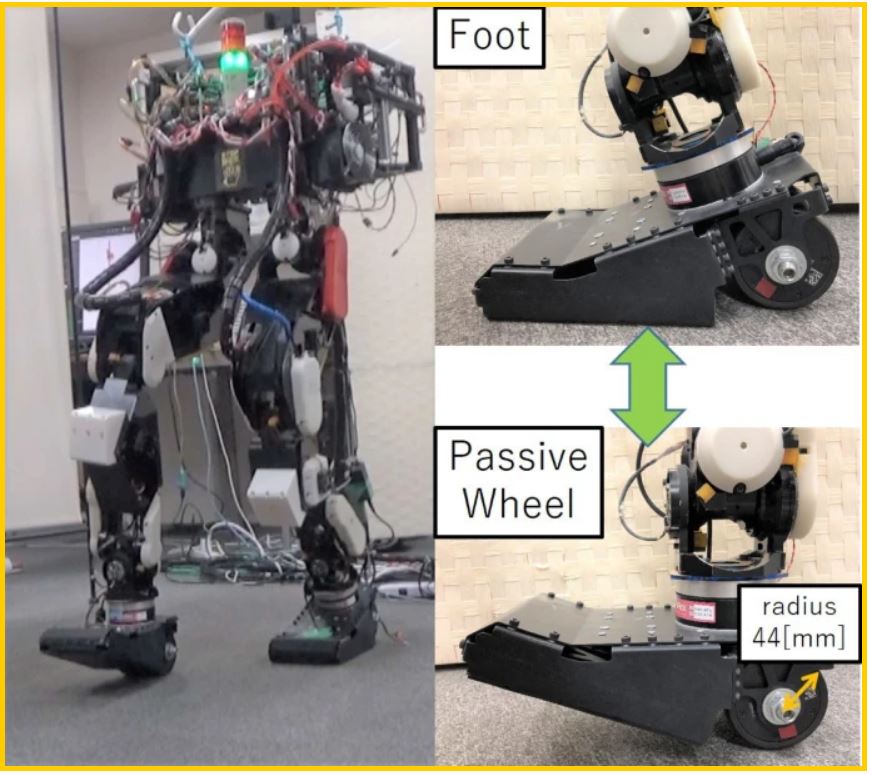
In Locomotion approach of bipedal robot utilizing passive wheel without swing leg based on stability margin maximization and fall prevention functions, a passive wheel is added to a 12 degree of freedom set of legs which allows it to walk without the swing leg phase.
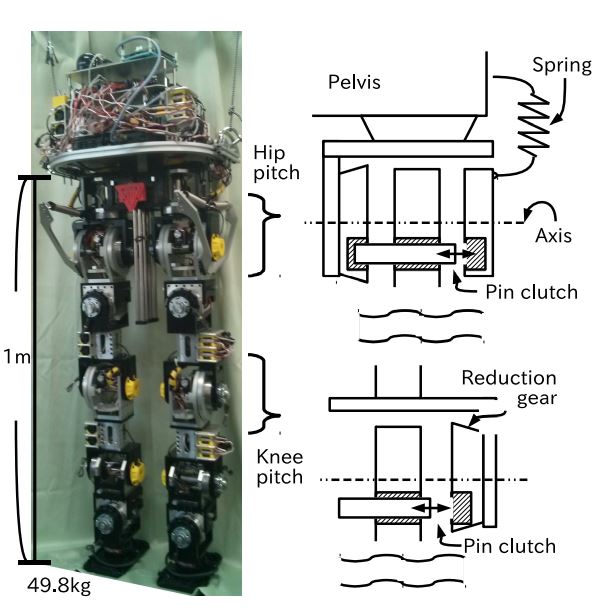
In Semi-Passive Walk and Active Walk by One Bipedal Robot, a 12 degree of freedom set of legs was modified to allow for a clutch to switch the hip pitch and knee from driven joints to spring/passive joints. In a later paper, wheels were added to this robot as well.
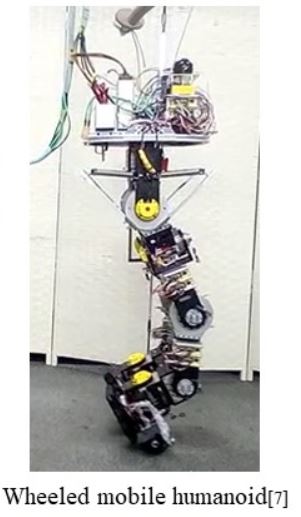
JAXON
Competed in the DARPA Robotics Challenge as team NEDO-JSK. Uses similar technology as HRP-3L and S-Taro such as water cooled motor drivers and water cooled Maxon EC-4pole motors. Software was developed on HRP-2 and S-Taro as the hardware development was only started in July of 2014 (the DRC finals were in June of 2015). JAXON is 1880 mm tall and weighs 127 kg. JAXON has 6 DoF in each leg, 8 DoF in each arm, a 3 DoF torso, and a 2 DoF neck for a total of 32 DoF without grippers. The knee joint uses a harmonic drive with a gear ratio of 100:1 allowing for a max torque of 492 NM. The max joint torques were designed to allow Jaxon to step up a 400 mm step.
Redesigned JAXON3-P uses 2 water-cooled EC-4pole 30 motors for the knee. The knee features a gear set (not a harmonic!) with a ratio of 18:1 then a cable-pulley transmission with a ratio of 180:11. This gives the joint a continuous torque output of 516 NM and a limit torque of 700 NM. So far JAXON3-P has been demonstrated jumping across a 0.47 meter gap, jumping off a step, and jumping 0.3 meters vertically.
More information on the original design in Development of Humanoid Robot System for Disaster Response Through Team NEDO-JSK’s Approach to DARPA Robotics Challenge Finals. More information on JAXON3-P in Drive-Train Design in JAXON3-P and Realization of Jump Motions: Impact Mitigation and Force Control Performance for Dynamic Motions.
RHP (Kaleido)
Robust Humanoid Platform (RHP) was designed with a similar joint configuration and joint motion range as JAXON, except for the exclusion of a yaw axis in the torso. Instead of using rotational joints and harmonic drives, RHP uses linear actuators made from ball screws.
Professor Masayuki Inaba, from the JSK lab, added force sensors to the ankles of the robot to prevent it from falling. The robot—which had previously only been able to walk on all fours or holding onto surrounding objects— was now able to walk upright unassisted.
More info here: Kaleido
